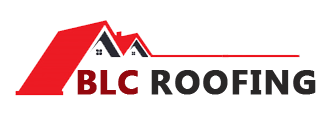Roofs are the first line of defense against the unpredictable forces of nature. From scorching sun rays to torrential rains, they bear it all to keep our homes safe and dry. Understanding the effects of various weather elements on roofing systems is crucial for homeowners, especially for those in areas prone to extreme weather conditions.
Contents
Hail’s Havoc on Roofing Materials
Hailstorms are notorious for the damage they can inflict on roofs. When hailstones, varying in size and density, strike asphalt shingles, they can dislodge granules, leading to the deterioration of the shingles. The aftermath of a hailstorm often reveals dark spots on asphalt roofs where granules have been stripped away. This not only compromises the aesthetic appeal but also the functional integrity of the roof. Over time, these affected areas can become weak points, making them susceptible to leaks and water damage.
For homeowners with other roofing materials like wood shake, metal, tile, or slate, hail can manifest damage differently. Cracked tiles, missing sections, or even tears at the seams can be indicative of hail damage. It’s essential to conduct a thorough inspection after a hailstorm to assess the extent of the damage and take corrective measures.
Wind: The Silent Roof Destroyer
Wind doesn’t always announce its destructive potential with howling sounds or visible damage. Its impact on roofs can be subtle yet profound. As wind flows over a roof, it doesn’t exert uniform pressure. Some areas, especially along the perimeter or specific shapes and slopes, can experience heightened wind pressures. This can lead to the lifting of loose shingles, giving wind an opportunity to sneak beneath and exacerbate the damage. Once the protective layer is compromised, it becomes easier for rain to penetrate the underlying structures, leading to potential leaks and structural damage.
Rain: The Stealthy Invader
Rain, while essential for life, can be a roof’s adversary if it finds a way underneath the roofing materials. Over time, persistent water intrusion can lead to rot in the roof structure, compromising its integrity. This moisture can also promote the growth of mildew and mold in walls, ceilings, and insulation, posing health risks to the inhabitants. Furthermore, water can find its way into electrical systems, posing a safety hazard. Proper roofing techniques, such as the use of roof flashing, can prevent rainwater from seeping into vulnerable areas, especially during storms with high winds.
The Sun’s Slow Assault
While we often cherish sunny days, prolonged exposure to the sun’s heat and ultraviolet rays can gradually wear down roofing materials. Over time, even sun-resistant materials like metal or tile roofs can show signs of deterioration. UV rays can cause discoloration, and the presence of pollutants can accelerate this process. Homeowners looking to maintain the vibrancy of their roofing colors should consult with roofing experts about protective pigments and treatments that can combat the effects of long-term sun exposure.
BLC Roofing: Your Partner in Roof Maintenance
At BLC Roofing, we understand the challenges that weather poses to residential roofs. Whether you’re in need of a roof repair service in Akron OH or seeking expert advice on roof installation in Akron OH, our team is equipped to provide top-notch services tailored to your needs. Remember, timely inspections and maintenance can extend the life of your roof and save you from costly repairs in the long run.
